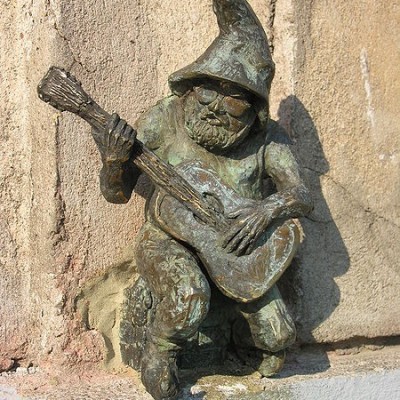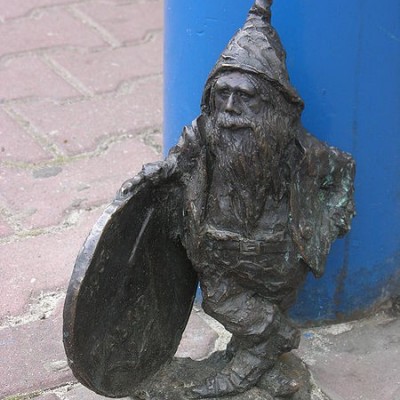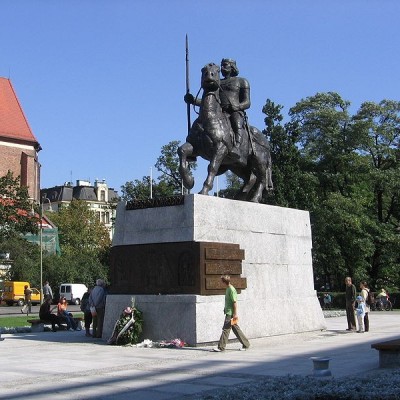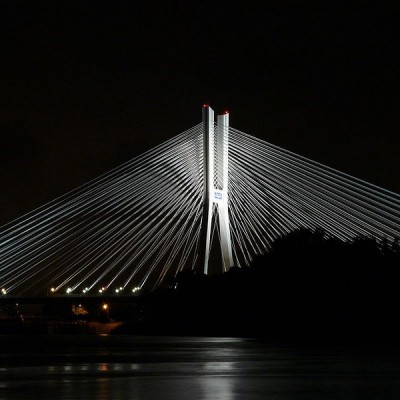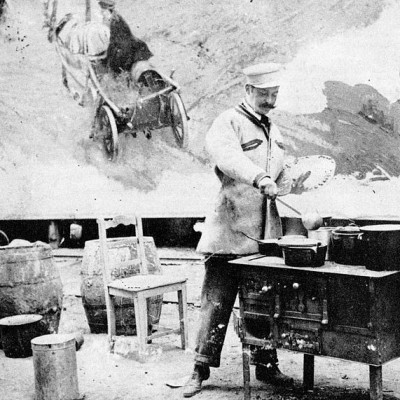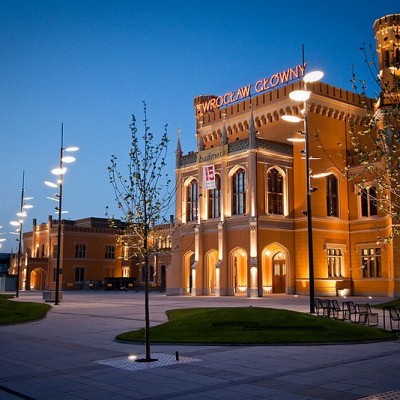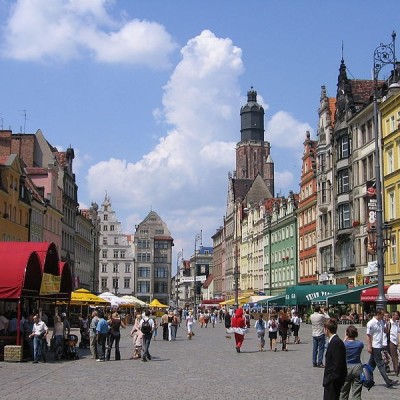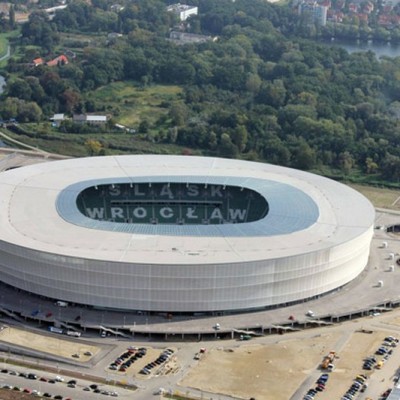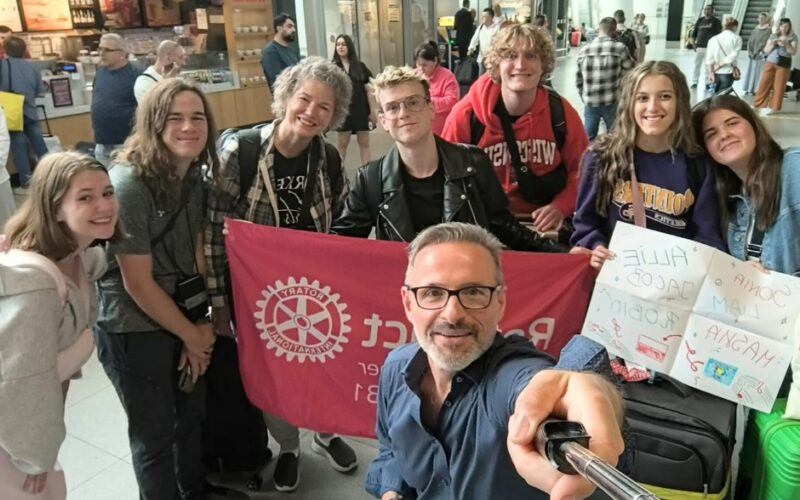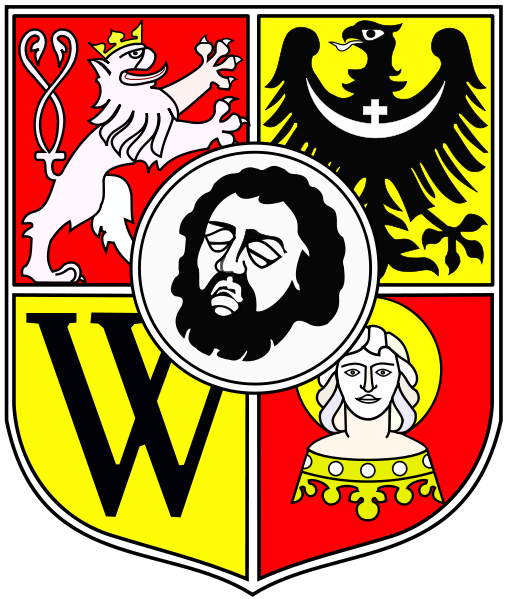 Wroclaw (lat. Wratislavia, germ. Breslau) – in the south-western Poland, situated on the Odra River and its four tributaries. Sometimes called the „Venice of the North”. Wroclaw is the fourth largest number of bridges in Europe, ranks as Venice, Amsterdam and St. Petersburg. As one of the few cities in Europe and constantly preserved city moat filled with water. It is the historical capital of Silesia. The town belonged to the Hanseatic League. The fourth most populous city in Poland – 650 000 inhabitants. Wroclaw is also one of the oldest Polish cities with more than 1000 years of history.
Wroclaw (lat. Wratislavia, germ. Breslau) – in the south-western Poland, situated on the Odra River and its four tributaries. Sometimes called the „Venice of the North”. Wroclaw is the fourth largest number of bridges in Europe, ranks as Venice, Amsterdam and St. Petersburg. As one of the few cities in Europe and constantly preserved city moat filled with water. It is the historical capital of Silesia. The town belonged to the Hanseatic League. The fourth most populous city in Poland – 650 000 inhabitants. Wroclaw is also one of the oldest Polish cities with more than 1000 years of history.
The former capital of the Duchy of Wroclaw. Wroclaw despite war damage or preserved many buildings in their original condition, or restored or rebuilt after the war – the Gothic Town Hall, Market Square, Gothic churches on Cathedral Island, Gothic churches, Baroque main building of the Wroclaw University Aula Leopoldina, neo-Gothic building railway station, the modernist ” Centennial Hall „- the object on the UNESCO World Heritage List, declared a historical monument, the Opera of Wroclaw, Hotel Monopol, Piast brewery buildings, the Palace Spätgen, Palace Schaffgotsch. In addition, the city survived more than eight thousand historic buildings representing historical styles from the nineteenth and early twentieth century, under the special regeneration programs successfully undergo renovations. It is the largest cluster of this type of historic building in Poland and one of the largest in Europe. These townhouses represent styles from Baroque through classicism, Art Nouveau through to Modernism. Many of the houses reflects the high architectural and aesthetic qualities. These are preserved and entire streets historicizing architecture. The building of the West Bank in the Market operates only in Wroclaw paternoster, the elevator without doors, which travels at a constant speed without stopping at each floor. Town Hall is one of the oldest town halls in Poland. On tall tower is the oldest in Poland and the oldest clocks bell, the clock tower in 1368. In the basement of the building is the oldest (from the fourteenth century) restaurant in Europe – Basement Świdnicka.
Thousand years of history the city has left traces in the architecture of several cultures. There are a number of impressive buildings of the University of Wroclaw, and the bleak landscape of the Court in the neo-Gothic style. Charming houses surrounding the market for tourists delight. The city, inspired by the Orange Alternative, settled in Wroclaw new people – dwarfs. Figurines gnomes deployed in the most unexpected places in the city.
Racławice Panorama Wroclaw is one of the few places in the world where you can enjoy a relic of nineteenth-century popular culture. The large painting (15x114m), thus linking the special paint treatments (special perspective) and technical (lighting, artificial terrain, dark, winding approach), „move” the viewer into another reality and another time. Racławice Panorama’s first and only Polish preserved to this day work of this kind. The ceremonial opening was Racławice Panorama June 5, 1894 in the Rotunda building in Lviv. After World War II a great attraction of old Lviv became the main attraction of Wroclaw.
Wroclaw is the largest university centers in Poland, has 13 state universities and 23 private, and in them 144 thousand students. In the city’s international airport in Wroclaw. In the town there is also a river port on the Oder. Wroclaw is the host of the UEFA EURO 2012 and World Championships in men’s volleyball in 2014, European Capital of Culture 2016 and hosted the World Games 2017.












